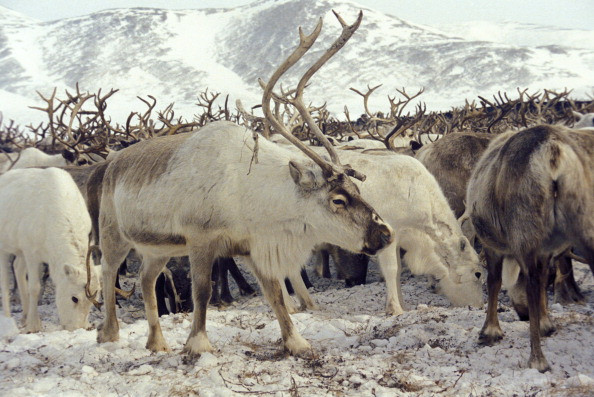Siberia's deadly anthrax outbreak came from reindeer frozen in time 75 years ago
Disease was transmitted to humans after permafrost melted and revealed a dormant bacteria in the soil.

An anthrax outbreak in Siberia has killed a young boy and landed 90 other people in hospital. The rare bacterial disease is thought to have spread from reindeer, one of the most common animals in the region.
Anthrax is caused by a bacteria known as Bacillus anthracis, and affects primarily herbivorous mammals. Veterinary vaccines have dramatically reduced the prevalence of the disease globally – before their introduction, anthrax was a major cause of death in cattle around the world. However, in places were livestock vaccination programs are inadequate, the disease can reappear frequently.
The recent Siberia outbreak emerged in the Yamalo-Nenets region of Siberia, where different reindeer-herding communities live.
More than 2,300 animals have already died from the disease, in what is now described as the worse anthrax outbreak in the region since 1941.
With 90 people – including 50 children – in hospital, the rest of the families in the area have been evacuated to a campsite about 60km from the infection hotspot.
Dead reindeer and melting permafrost
Why the disease re-emerged in the region after such a long time remains unclear. The current, most popular hypothesis is that a heatwave this summer caused permafrost to melt. This led to the resurrection of a long-dormant Bacillus anthracis trapped under the ice. The bacteria can indeed survive in the soil for many years, in an inactive form known as 'spores'.
In this case, it likely came from the carcass of a reindeer that died in the anthrax outbreak 75 years ago, and had been frozen ever since. It infected the reindeer when they started grazing on the now unfrozen ground.
Anthrax is known to be passed on to humans through contact with infected animals or contaminated animal products. In Siberia, the people who fell sick likely got the disease from butchering and eating reindeer.
There is cautious optimism though that the outbreak will soon be over now that measures to contain the epidemics – such as the evacuation of people in the region – have been established.
What is Anthrax?
According to the US Centers for Disease Control and Prevention (CDC), Anthrax is a serious infectious disease caused by gram-positive, rod-shaped bacteria known as Bacillus anthracis. Though it is mostly found in domesticated and wild animals, Anthrax can also affect humans if they come in contact with infected animal carcasses. It is however not contagious, which means that people cannot catch it from other humans, like a virus.
Most of the time, the anthrax bacteria live in an inactive form called spores but gets activated and causes the disease once it enters animals' and humans' bodies.
There are three types of anthrax. Cutaneous anthrax is the most common form of the infection, and the least dangerous. It occurs when anthrax spores get into the skin, usually through a cut or scrape, when a person handles infected animals or contaminated animal products. It affects the skin and tissue around the site of infection. Inhalation anthrax is considered to be the most deadly and occurs when a person breathes in anthrax spores. The disease begins in the lymph nodes in the chest before spreading to the rest of the body, which results in severe breathing problems and shock.Gastrointestinal anthrax is rarer but can occur when a person eats raw or under-cooked meat from an animal infected with anthrax. In the body, anthrax spores affect the throat, esophagus, stomach, and intestines.
All types of anthrax can be prevented and treated with antibiotics. Once people get sick they have to be hospitalise, and often require an aggressive treatment, such as continuous fluid drainage and breathing-assistance.
© Copyright IBTimes 2025. All rights reserved.






















